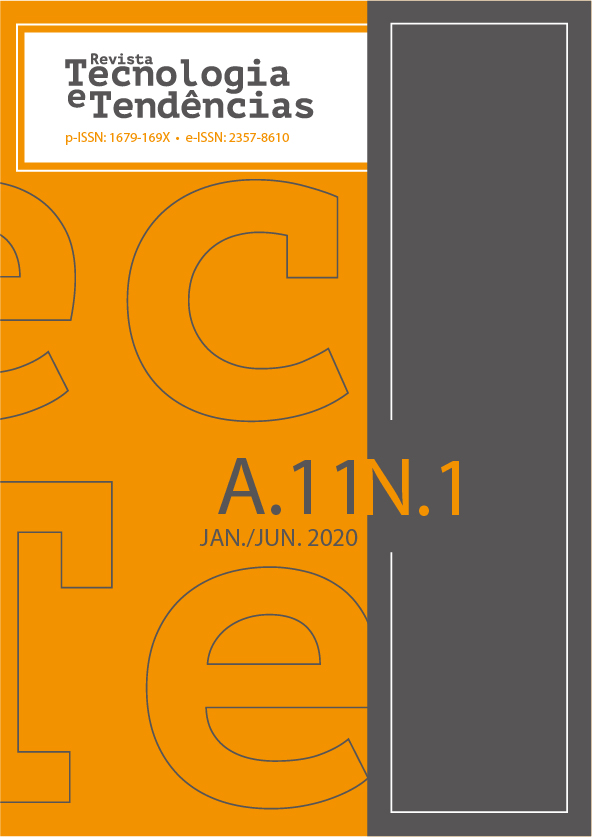VALORIZAÇÃO DOS PRODUTOS ORIUNDOS DO RESÍDUO DE COURO WET-BLUE HIDROLISADO
DOI:
https://doi.org/10.25112/rtt.v11i1.2280Resumo
RESUMO
O processo de transformação de pele em couro gera um expressivo volume de efluente, emissões atmosféricas e de resíduos sólidos. Dependendo dos insumos e principalmente do curtente utilizado, o curtimento pode gerar resísuos perigosos. É o caso dos processos que utilizam o óxido cromo como curtente. Estima-se que 90% dos curtumes utiliza o óxido de cromo em função do seu custo benefício. Visando reduzir o envio de resíduo de couro wet-blue para aterros de resíduos perigosos, este trabalho tem como objetivo propor um método que permite reduzir a concentração de cromo do resíduo. O estudo compreendeu as seguintes etapas: 1) caracterização físico-química do resíduo wet-blue; 2) testes de hidrólise em fulões piloto com emprego de ácido cítrico, variando relação cromo:ácido, pH e método de lavagem; 3) caracterização físico química do colágeno hidrolisado e do banho residual do processo de hidrólise. Os resultados obtidos revelaram que a hidrólise com ácido cítrico possibilitou uma redução de até 87,35% do cromo presente no resíduo de wet-blue e resultou na geração de dois produtos: um material sólido colagênico rico em nitrogênio e com potencial de ser utilizado como fonte de nutrientes para plantas, como matéria prima para produção de adesivo ou adsorvente, e um efluente de coloração escura com pH baixo e com aproximadamente 500 mg.Cr.L-1 com possibilidade de ser reaproveitado no processo de curtimento. Assim, o estudo demonstrou uma alternativa tecnológica para o tratamento de resíduos de wet-blue, possibilitando o reaproveitamento de materiais que seriam descartados em aterros de resíduos perigosos.
Palavras-chave: Descromagem. Hidrólise Ácida. Resíduo de Couro.
ABSTRACT
The process of transforming skin into leather generates a significant volume of effluent, atmospheric emissions and solid waste. Depending on the inputs and mainly the tanner used, tanning can generate dangerous residues. This is the case of processes that use chromium oxide as a tanner. It is estimated that 90% of tanneries use chromium oxide due to its cost benefit. Aiming to reduce the shipment of wet-blue leather waste to hazardous waste landfills, this work aims to propose a method that allows reducing the chromium concentration of the waste. The study comprised the following steps: 1) physical chemical characterization of wet-blue waste; 2) hydrolysis tests on pilot drums using citric acid, varying the chromium: acid ratio, pH and washing method; 3) physical and chemical characterization of the hydrolyzed collagen and the residual bath of the hydrolysis process. The results obtained revealed that the hydrolysis with citric acid allowed a reduction of up to 87.35% of the chromium present in the wet-blue residue and resulted in the generation of two products: a solid collagen material rich in nitrogen and with the potential to be used as source of nutrients for plants, as raw material for the production of adhesive or adsorbent and a dark colored effluent with low pH and approximately 500 mg.Cr.L-1 with the possibility of being reused in the tanning process. Thus, the study demonstrated a technological alternative for the treatment of wet-blue waste, enabling the reuse of materials that would be disposed of in hazardous waste landfills.
Keywords: Acid Hydrolysis. Decromatization. Leather residue.Publicado
Edição
Seção
Licença
• Os autores mantêm os direitos autorais e concedem à revista o direito de primeira publicação com o trabalho licenciado sob a Licença Creative Commons - Attribution 4.0 International (CC BY 4.0).
• Os autores são estimulados a publicar e distribuir seu trabalho online (ex.: em repositórios institucionais ou na sua página pessoal), pois isso pode aumentar o impacto e a citação do trabalho publicado.
--------------------------------------------------------------------------------------------------------------------------------
• The authors retain the copyright and grant the magazine the right of first publication with the work licensed under the Licença Creative Commons - Attribution 4.0 International (CC BY 4.0).
• Authors are encouraged to publish and distribute their work online (eg in institutional repositories or on their personal page), as this may increase the impact and citation of the published work.

